#travel booking nigeria
Text
Destination for tourists to spend quality time in Nigeria
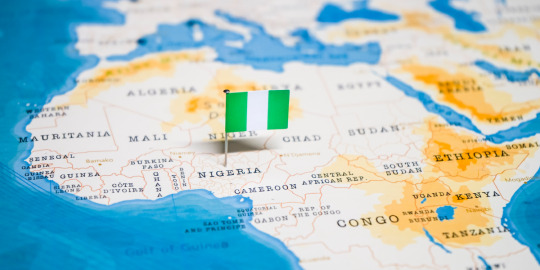
It is adorned with lush vegetation and palm trees. Indulge yourself in horse riding activities when you are not in the mood to relax in the sunshine. This is a great place to get souvenirs from the local vendors. Tarkwa Beach is a nice place.
There are several other beautiful Nigerian tourist attractions that will make your trip to this country one of the most memorable trips you ever take. Beautiful cities like Calabar and EDO are national reserves, while others like Port Harcourt are industrial hotspots. These are the major tourist attractions that will make your trip memorable. Explore the majestic beauty of this country with travel ticket booking in Nigeria.
Calabar
Calabar is regarded as the tourism capital of Nigeria and is the capital of Cross River State. Originally, the city was called Akwa Akpa in the native Efik language, also referred to as the Kingdom of Calabar. Calabar is home to the natural wealth and beauty of the Kwa Waterfalls. Calabar, also known as the home of the Drill Rehabilitation Center, is a national park that protects the endangered species of the drill. Travelers can spot people museum hopping in Calabar. Tinapa Resort is famous for its amazing activities for having fun and enjoying yourself with family and friends.
Port Harcourt
Port Harcourt is the largest and busiest capital of Rivers State. It is the most popular tourist attraction in Nigeria. The site is known for its fishing industry, which provides fish-freezing facilities and a place where boats are made. The top highlights of this place are:
Port Harcourt Zoo, Baraka, Pleasure Park, SOK Lounge, The Boss Lounge.
EDO
In the southern part of Nigeria, EDO is situated and has become the destination center. The Okomu Forest Reserve is a popular and the smallest national park in EDO, as well as one of the best tourist attractions. Okomu is known for its beauty. The park is home to various endangered monkeys and elephants. It's a thick natural rainforest in West Africa.
Ibadan
Let’s talk about the third largest city by population and the most populous city in Oyo state and the capital of Nigeria, Ibadan. This city is the second fastest growing city on the African continent and a major tourist destination. The city is located in the south-west part of Nigeria.
If you are interested in learning about the hidden culture of this place, then it's a pleasant place to visit. The popular cultural event in Nigeria is Oke'Badan which celebrates and commemorates the founding of Ibadan and shows gratitude to the founders. Some of the other major tourist attractions in Ibadan are:
Agodi Gardens and Leisure Park, UI Zoo, Ado Awaye Mountains and Suspended Lakes, Top Fat Art Gallery, and many more
University Of Ibadan Zoological Gardens
This was first established in 1948 as a menagerie to support teaching and research. Then, later on, the place is converted into a zoo and becomes a major tourist attraction. The zoo is home to a wide variety of animals, such as mammals, reptiles, birds, and amphibians. The zoo is open all year round from 8 a.m. to 6.30 p.m. and is a major tourist attraction, mostly visited by school and college students for educational purposes.
Conclusion
Nigeria has limitless attractions to offer travelers. But there are some places that are worth visiting when you are in Nigeria and Africa. To make your trip memorable, book your travel tickets online through Satguru Travels. Get detailed information about tour packages in Nigeria that provides excellent guidance about online travel bookings in Nigeria, accommodation services, and many other aspects of a tour.
1 note
·
View note
Text
How to Make Your Beach Trip Successful?
The soothing sound of the seawater, lying down on the beach sand, sunbathing is what we imagine and expect to spend time during our beach trip. This is something we call a successful beach trip. But, to make it successful, we have to surpass all those obstacles to make it relaxing and memorable. When we say obstacles that doesn't mean you have to face anything during your travel but the things that might make you feel regret if you don’t carry for the trip.

Trips to the beach destinations can be the most amazing decision in terms of enjoyment and relaxation. It would be a cherry on top of the locations like the Bahamas, The Caribbean, or Mexico are listed. Most of the time, we plan such beach trips with our friends and family that the beaches are the best places to make memories.
It is always better to list things that you might need during the trip because we always miss something or forget to carry that sometimes is the most important thing. No need to worry we have got your back. Here we have made a list of things to take with you for your beach trip.
Keep Sunscreen
It’s inevitable to get tanned or damage your skin if you expose it directly to the sun rays during travel. Don’t play rough with your skin, that is as important as your mobile phone being safe. Especially when you travel to the beach, you are almost going near the sun so it would be better if you bag sunscreen with you to protect your skin. We recommend high SPF sunscreen that has to suit your skin type.
Lightweight Packing
Having so much baggage with you might make you feel tired before you reach. Imagine, you being tired in front of the beautiful view. There are also some DIY packing hacks videos available online to help you with. So if you are going to a beach location, make sure you pack light.
If you are planning for a beach trip, it is obvious to spend a lot of time on the beach. Avoid packing fancy outfits and heels that will ruin your sand walk. So it is advisable to pack something light.
Pack Extra Underwears
As you are going to the beach, it is advisable to have extra underwear with you. There is a possibility of an emergency since you will be in the water for most of the day. It would be always better to carry extra clothes and when it comes to underwear, they are small in size and occupy less space.
Plan Your Outfits According to
Don’t mess with your packing time. You will miss so many things if you believe in packing at the last moment. Due to hurry, you pick all the stuff you see and the baggage become heavy because of unnecessary things. During this hurry, you miss out on important things and that would be the biggest irritation when you reach your destination. Always pack according to the place you are visiting. Your outfit has to be comfortable.
Flip Flops or Crocks for Sand Walks
Flip Flops and crock are known as the most comfortable footwear. When you visit destinations of beaches, it is always recommended to be with comfortable footwear so it won’t be embarrassing. There are chances of you losing your favourite footwear just because of one mistake. We would recommend you to carry flip flops and crock so the soil won’t spoil your favourite footwear.
Learn to Identify rip currents
When you go on a seaside trip for fun, you don’t even imagine any kind of danger which could lead us to a troubled moment. There is a rip current which is the strongest jet of water that suddenly flows away from shore. It also gives you visual hints that help to identify huge potential zones before going into the water. First of all, learn how to swim and if you don’t know then it’s best to research before you go to the beach.
During your water check these things:
1. A Sandbar in the water
2. Discoloured water near the shore
3. Gaps between the waves
Travel Insurance
Wherever you go, always keep yourself as a priority, it might sound like a motivation quote but that’s the truth. Make sure you obtain Travel Insurance before you go anywhere. You never know what is coming for you so it would be better if you are always ready for whatever is coming in your way. You might have to invest the whole savings. It is beneficial to have travel insurance that will help you avoid big economical trouble.
Having travel insurance is a sign of a smart traveller. Make sure you be a smart traveller.
Make Beautiful Memories
Since you have almost taken everything from the list, don’t forget to take a good camera to capture beautiful moments with your friends and family.
Even having a good camera is one of the important things, because memories bring back, memories bring back you.
Read More - http://satgurutravel.com/nigeria/2022/06/13/important-facts-you-should-know-about-nigeria/
#travel management company in nigeria#best corporate travel company in nigeria#online travel booking in nigeria#nigeria corporate travel services#business travel management company in nigeria#travel ticket booking in nigeria#website for flight booking in nigeria#top corporate travel management companies in nigeria#corporate travel providers in nigeria#nigeria top business travel agency
0 notes
Text
Cold Iron in folklore, fiction, and RPGs
'Gold is for the mistress—silver for the maid!
Copper for the craftsman cunning at his trade.'
'Good!' said the Baron, sitting in his hall,
'But Iron—Cold Iron—is master of them all!'
— Rudyard Kipling, “Cold Iron”
Folklore

Drudenmesser, or "witch-knife", an apotropaic folding knife from Germany
The notion that iron (or steel) can ward against evil spirits, witches, fairies, etc is very widespread in folklore. You hang a horseshoe over your threshold to deny entry to evil spirits, you carry an iron tool with you to make sure devils won't assault you, you place a small knife under the baby's crib to ward it from witches, and so on. Iron is apotropaic in many many cultures.
In English, we often come across passages that refer to apotropaic cold iron (or cold steel). "All uncouth, unknown Wights are terrifyed by nothing earthly so much as by cold Iron", says Robert Kirk in 1691, which I believe is the earliest example. "Evil spirits cannot bear the touch of cold steel. Iron, or preferably steel, in any form is a protection", says John Gregorson Campbell in 1901.
Words
So what is cold iron? In this context, it’s just iron. The “cold” part is poetic, especially – but not only – if we’re talking about either blades (or swords, weapons, the force of arms) or manacles and the like. It just sounds more ominous. There are “cold yron chaines” in The Fairie Queene (1596), and a 1638 book of travels tells us that a Georgian general (in the Caucasus) vowed “to make the Turk to eat cold iron”.
Green’s Dictionary of Slang defines “cold iron” as a sword, and dates the term to 1698. From 1725 it appears in Cant dictionaries (could this sense be thieves’ cant, originally? why not, plenty of words and expressions started as underworld slang and then entered the mainstream), and from ~1750 its use becomes much more common.

NGram Viewer diagram for 1600-2019.
In other contexts, cold iron is (surprise!) iron that’s not hot. So let’s talk a bit about metallurgy.
Metals

In nature, we can find only one kind of iron that’s pure enough to work with: meteoritic iron. It has to literally fall from the sky. Barring that very rare occurrence, people have to mine the earth for iron ore, which is not workable as is. To separate the iron from the ore we have to smelt it, and for that we need heat, in the form of hot charcoals. Throwing the ore on the coals won’t do much of anything, it’s not hot enough. But if we enclose the coals in a little tower built of clay, leaving holes for air flow, the temperature rises enough to smelt the ore. That’s called a bloomery.

clay bloomery / medieval bloomery / beating the bloom to get rid of the slag
What comes out of the bloomery is a bloom: a porous, malleable mass of iron (that we need) and slag (byproducts that we don’t need). But now we can get rid of the slag and turn the porous mass to something solid, by hammering the hot bloom over and over. And once the slag is off, by the same process we can give it a desired shape in the forge, reheating it as needed. This is called “working” the iron, hence “wrought iron” objects, i.e. forged.

a blacksmith in his forge, with bellows, fire, and anvil (English woodcut, 1603)
This is the lowest-tech version, possibly going back to ~2000 BCE in Nigeria. If we add bellows, the improved air flow will raise the temperature. So smelting happens faster and more efficiently in the bloomery, and so does heating the iron in the forge, making it easier to work with. And that’s the standard process from the Iron Age all through the middle ages and beyond (although in China they may have skipped this stage and gone straight to the next one).
If we make the bloomery bigger and bigger, with stronger and stronger bellows, we end up with a blast furnace, a construction so efficient that the temperature outright melts the iron, and it’s liquified enough to be poured into a mould and acquire the desired shape when it cools off. This is “cast iron”.

a blast furnace
So in all of this, what’s cold iron? Well, it’s iron that went though the heat and cooled off. (No heat = no iron, all you got is ore.) If it came out of a bloomery, or if it wasn’t cast, it’s by definition worked, hammered, beaten, wrought, and that happened while it was still hot.
Is there such a thing as “cold-wrought” iron? No. In fact, “working cold iron” was a simile for something foolish or pointless. A smith who beats cold iron instead of putting it in the fire shows folly, says a 1694 book on religion, so you too should choose your best tools, piety and good decorum, to educate your children and servants, instead of beating them. When Don Quixote (1605) declares he’ll go knight-erranting again, Sancho Panza tries to dissuade him, but it’s like “preaching in the desert and hammering on cold iron” (a direct translation of martillar en hierro frío).
Minor work can be done on cold iron. A 1710 dictionary of technical terms tells us that a rivetting-hammer is “chiefly used for rivetting or setting straight cold iron, or for crooking of small work; but ’tis seldom used at the forge”. Fully fashioning an object out of cold iron is not a real process – though a 1659 History of the World would claim that in Arabia it’s so hot that “smiths work nails and horseshoes out of cold iron, softened only by the vigorous heat of the sun, and the hard hammering of hands on the anvil”. [I declare myself unqualified to judge the veracity of this statement, let's just say I have doubts.] And there is of course such a thing as “cold wrought-iron”, as in wrought iron after it’s cooled off.
Either way, in the context of pre-20th century English texts which refer to apotropaic “cold iron”, it’s definitely not “cold-wrought”, or meteoritic, or a special alloy of any kind. It’s just iron.
Fiction
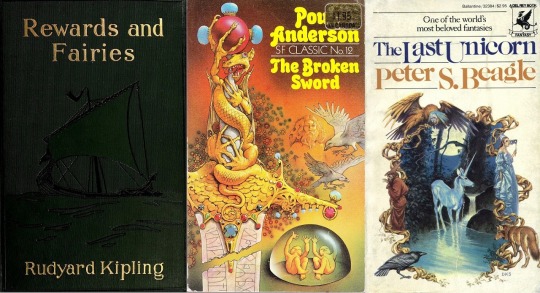
The old superstition kept coming up in fantasy fiction. In 1910 Rudyard Kipling wrote the very influential short story “Cold Iron” (in the collection Rewards and Fairies), where he explains invents the details of the fairies’ aversion to iron. They can’t bewitch a child wearing boots, because the boots have nails in the soles. They can’t pass under a doorway guarded by a horseshoe, but they can slip through the backdoor that people neglected to guard. Mortals live “on the near side of Cold Iron”, because there’s iron in every house, while fairies live “on the far side of Cold Iron”, and want nothing to do with it. And changelings brought up by fairies will go back to the world of mortals as soon they touch cold iron for the first time.
In Poul Anderson’s The Broken Sword (1954), we read:
“Let me tell you, boy, that you humans, weak and short-lived and unwitting, are nonetheless more strong than elves and trolls, aye, than giants and gods. And that you can touch cold iron is only one reason.”
In Peter S. Beagle’s The Last Unicorn (1968) the unicorn is imprisoned in an iron cage:
“She turned and turned in her prison, her body shrinking from the touch of the iron bars all around her. No creature of man’s night loves cold iron, and while the unicorn could endure its presence, the murderous smell of it seemed to turn her bones to sand and her blood to rain.”
Poul Anderson would come back to that idea in Operation Chaos (1971), where the worldbuilding’s premise is that magic and magical creatures have been reintroduced into the modern world, because a scientist “discovered he could degauss the effects of cold iron and release the goetic forces”. And that until then, they had been steadily declining, ever since the Iron Age came along.
There are a million examples, I’m just focusing on those that would have had a more direct influence on roleplaying games. However, I should note that all these say “cold iron” but mean “iron”. Yes, the fey call it cold, but they are a poetic bunch. You can’t expect Robin Goodfellow’s words to be pedestrian, now can you?
RPGs

And from there, fantasy roleplaying systems got the idea that Cold Iron is a special material that fey are vulnerable to. The term had been floating around since the early D&D days, but inconsistently, scattered in random sourcebooks, and not necessarily meaning anything else than iron. In 1st Edition’s Monster Manual (1977) it’s ghasts and quasits who are vulnerable to it, not any fey creature. Devils and/or fiends might dislike iron, powdered cold iron is a component in Magic Circle Against Evil, and “cold-wrought iron” makes a couple of appearances. For example, in AD&D it can strike Fool’s Gold and turn it back to its natural state, revealing the illusion.
Then Changeling: The Dreaming came along and made it a big deal, a fundamental rule, and an anathema to all fae:
Cold iron is the ultimate sign of Banality to changelings. ... Its presence makes changelings ill at ease, and cold iron weapons cause horrible, smoking wounds that rob changelings of Glamour and threaten their very existence.... The best way to think about cold iron is not as a thing, but as a process, a very low-tech process. It must be produced from iron ore over a charcoal fire. The resulting lump of black-gray material can then be forged (hammered) into useful shapes.
— Changeling: The Dreaming (2nd Edition, 1997)
So now that we know how iron works, does that description make sense? Well, if we assume that the iron ore is unceremoniously dumped on coals, it does not. You can’t smelt iron like that. If we assume that a bloomery is involved even though it’s not mentioned, then yes, this is broadly speaking how iron’s been made since the Iron Age, and until blast furnaces came into the picture. But the World of Darkness isn’t a pseudo-medieval setting, it’s modern urban fantasy. So the implication here is that “cold iron” is iron made the old way: you can’t buy it in the store, someone has to replicate ye olde process and do the whole thing by hand. Now, this is NOT how the term “cold iron” has been used in real life or fiction thus far, but hey, fantasy games are allowed to invent things.
Regardless, 3.5 borrowed the idea, and for the first time D&D made this a core rule. Now most fey creatures had damage reduction and took less damage from weapons and natural attacks, unless the weapon was made of Cold Iron:
“This iron, mined deep underground, known for its effectiveness against fey creatures, is forged at a lower temperature to preserve its delicate properties.”
— Player’s Handbook (3.5 Edition, 2003)
Pathfinder kept the rule, though 5e did not. And unlike Changeling, this definition left it somewhat ambiguous if we’re talking about a material with special composition (i.e. not iron) or made with a special process (i.e. iron but). The community was divided, threads were locked over this!
So until someone points me to new evidence, I’ll assume that the invention of cold iron as a special material, distinct from plain iron, should be attributed to TTRPGs.
#long post#cold iron#d&d#Changeling: The Dreaming#World of Darkness#Peter S. Beagle#The Last Unicorn#Rudyard Kipling#Poul Anderson#The Broken Sword#how to rogue#pathfinder#rogues in fiction#Operation Chaos#rogue superstitions#words of the trade#thieves' cant#ad&d#d&d history#1st edition#fey#3.5#fluff#trs
338 notes
·
View notes
Text
november language goals 🩷
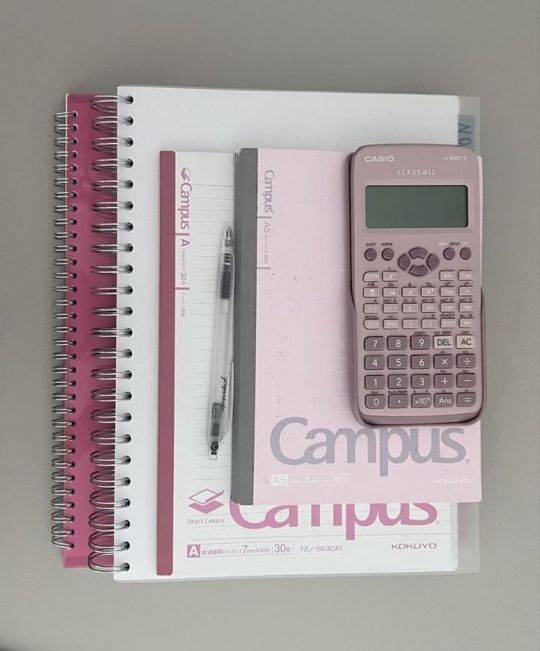

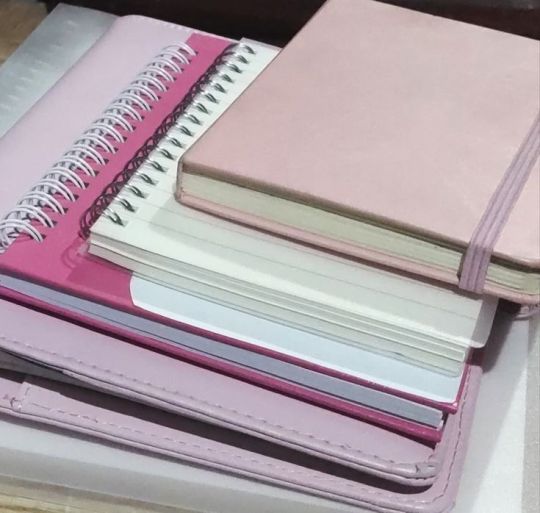
this will be my first language learning goals post since i started this blog! ♡
my current languages:
french (A2)
dutch (A1)
a lil life update, i finished my masters in the uk and moved back home to germany this month. i also spent my birthday (17/10) in paris, soon after i arrived back home. while being here, i haven’t done any intense revision other than keeping my streak on the language learning apps that i use. i do have a lot more free time now since i’m currently not working and i’m also done with uni, so i would need to amend and try my best to somewhat stick to my schedule.
here are my november language learning goals ♡:
maintain a 30 days duolingo, busuu & falou streak
write a digital journal entry (notion) about my birthday trip in both french & dutch
work through ‘Niederländisch Wort für Wort’ to and incl. chapter ‘Dieses & Jenes’
finish ‘UNIT ONE: Verbs and pronouns’ in ‘Basic Dutch’
write down all dutch vocabularies up to and incl. the numbers on digital dialects (website)
finish chapter 2 in ‘Dirty French’
write down all french vocabularies up to and incl. the numbers on digital dialects (website)
finish ‘The definite article’ in ‘Modern French Grammar’
write my first entry in my workbook about basic information about myself in both french & dutch
watch 5 easyfrech & easydutch youtube videos
this doesn’t seem like a lot for a whole month but considering i haven’t done much in october, this is a good start to get back into the habit of language learning.
not sure if i will be updating every week or bi-weekly, but i think bi-weekly will be more realistic! 🤍
i do plan on going back to the uk for a few days in november and soon after travel to nigeria for about a month towards the end of this month, so i need to see how i organise my time. good thing is that i mainly use notion and e-books for my revision so i don’t need to carry any (heavy) textbooks with me. let’s see how it goes.
happy halloween & until next time,
mars the prinzess xx
⠀⠀⠀⠀⢸⣆⣀⣀⢀⣀⠀⠀⠀⠀⠀⠀⠀⠀⠀⠀⠀⠀⢀⣀⣤⡎⠀⠀⠀⠀
⠀⠀⠀⠀⣸⠈⢣⡉⠉⠙⠚⠙⢷⠀⠀⠀⠀⣰⢾⠓⠛⠉⢉⡽⠀⣧⠀⠀⠀⠀
⠀⠀⠀⣰⠋⠀⠀⣹⣧⣆⣠⣀⡼⣆⠀⢀⣴⢿⣲⣤⣤⡤⡏⠀⠀⠘⣆⠀⠀⠀
⠠⣀⡴⠃⠀⠀⣴⡿⠙⢿⣇⡀⠀⠸⣎⢨⠏⠀⠀⣁⡼⠁⢱⡀⠀⠀⠘⢦⣀⡤
⠀⠈⢿⠲⢤⣰⠟⢁⣠⣾⠿⣿⣿⣯⣿⣯⠿⣿⣿⡿⣟⠀⠀⠑⣤⠤⠒⡿⠁⠀
⠀⠀⠈⢧⠀⠹⡉⢻⣟⣻⣆⣩⣾⣍⣿⡿⣄⣾⣟⢀⣿⣶⠞⢉⠇⠀⡼⠁⠀⠀
⠀⠀⠀⢸⡂⢀⣇⠀⣹⠉⠛⣿⣿⡿⢿⡿⣿⣿⣿⠋⣠⡿⡆⢸⠀⢠⡇⠀⠀⠀
⠀⠀⠀⢸⡁⣼⣿⣿⣟⣷⣾⠿⣿⣦⠀⣠⣴⣿⣿⠿⣿⣻⣁⣘⣄⠠⡇⠀⠀⠀
⠀⠀⠈⠉⠛⢬⡉⠒⠿⣋⠙⣷⣬⠿⣷⣾⢿⣇⣽⣿⣣⠔⠒⠉⡬⠟⠉⠙⠀⠀
⠀⠀⠀⠀⠀⠀⠙⢆⠀⠈⢆⣼⠟⣶⡸⣟⡾⢽⣿⡟⠁⠀⣰⠋⠀⠀⠀⠀⠀⠀
⠀⠀⠀⠀⠀⠀⠀⠈⢧⠀⡼⠿⢧⡟⢷⣯⢱⡬⠿⢿⠀⡼⠃⠀⠀⠀⠀⠀⠀⠀
⠀⠀⠀⠀⠀⠀⠀⠀⠘⣿⡁⠀⠀⠙⣿⣻⠇⠀⠀⢈⣷⠃⠀⠀⠀⠀⠀⠀⠀⠀
⠀⠀⠀⠀⠀⠀⠀⠀⠘⠁⠉⠓⢦⣀⠘⡏⢀⡴⠚⠉⠀⠃⠀⠀⠀⠀⠀⠀⠀⠀
⠀⠀⠀⠀⠀⠀⠀⠀⠀⠀⠀⠀⠀⠘⢮⣿⠋⠀⠀⠀⠀⠀⠀⠀⠀⠀⠀⠀⠀⠀
⠀⠀⠀⠀⠀⠀⠀⠀⠀⠀⠀⠀⠀⠀⠈⡇⠀⠀⠀⠀⠀⠀⠀⠀⠀⠀⠀⠀⠀⠀
*none of the pictures i used are my own, unless stated otherwise! i got them from pinterest.
#langblr#language learning#life currently#studyblr#pink academia#language learning goals#learning french#learning dutch#pink blog#self care#self love#that girl#personal blog#girl blogger#it girl#travel#education#postgraduate#post grad life#pink aesthetic#post from mars ♡
17 notes
·
View notes
Text
Author Ask Tag
Kindly tagged by @mysticstarlightduck 💕
1. What is the main lesson of your story (e.g. kindness, diversity, anti-war), and why did you choose it?
Ultimately The Protolith is story about liberation from gender and imperialist norms. I write more about this in my posts about representation in Fantasy settings. The main character Charlotte combats the patriarchal expectations on her when she's in love with men, even well-meaning ones. She explores her identity as a person of color and how colonization impacted her late mother. It's very fun to explore these themes in science fiction fantasy because you can be incredibly literal. I don't want to spoil my WIP and also I have fully explored these themes yet, so I'll stop here.
2. What did you use as inspiration for your worldbuilding (like real-life cultures, animals, famous media, websites, etc.)?
Honestly, anytime I see something neat, I throw it into my world. It's so easy to fall into making a gas lamp fantasy look like some iteration of Victorian England. I attempted to make the main setting (Lorenzia) a combination of French and Mediterranean culture, flora, food, etc. We have olive trees, lamb is commonly eaten, formal titles are derivatives of Monsieur, Mademoiselle, Madame (but I abbreviate them as M, Mme, and Mde which is not technically correct). The sexually free culture is reminiscent of 1800s France and the oppressive church that of Europe in the same century.
I even have a mountain valley that's based on a rock formation I studied in California; it's rainbow because of the different oxidation states of iron. In contrast, the country where our main character Charlotte's mom is from is loosely based on Nigeria. It's a fun coincidence that the names I've found for these characters are based on Igbo names - which is the tribe from which I'm descendent (yes, I did a 23&Me).
Some of the worldbuilding is done out of convenience. For example, the initial romance arc needs a reason why our love interests Charlotte and Byron can't be together. In every version of this story, he's been a soldier of some kind. It came to me late at night that making him a priest with a vow of celibacy would be the perfect plot device to keep my characters apart. Thus, the militant oppressive Church was born. Eventually, this Church became a thinly veiled statement on religious imperialism, but that's just a happy side effect.
Additionally, I wanted a world where wars are still waged with swords, but has technology such as gas light, running water, the beginning of electricity, steam engines, etc. I decided that in this setting, gun are exceptionally hard to make because due to the atmospheric composition, explosives are more violent and harder to contain.
Finally, I've really wanted to pull science fiction elements into this story, which is where I came up with the World Wound; a crater formed from an ancient meteorite which has never been explored by man.
In summary, I crafted my world based on places I've been (through travel or as a scientist) and for plot convenience.
3. What is your MC trying to achieve, and what are you, the writer, trying to achieve with them? Do you want to inspire others, teach forgiveness, and help readers grow as a person?
Look at answer #1
4. How many chapters is your story going to have?
50 😅 help me
5. Is it fanfiction or original content? Where do you plan to post it?
Original! I've started posting a few chapters here (only the first scene before I redirect readers to Google Drive). I'm not sure how many chapters I'll post here or what I plan to do after my first draft.
6. When and why did you start writing?
I've always been writing! My twin and I used to have a binder of pictures books we wrong in elementary school. We joined Wattpad at the beginning of high school, but both of us moved on from there by the time we were 18. My twin continued on as a fantastic short story writer and future novelist. I stopped writing for a really long time. I started writing seriously last December. I'd flown home to help my mom after she had surgery, and when I wasn't with her I didn't really have much to do. Honestly, it was the most free time I'd had since finishing undergrad four years ago.
7. Do you have any words of engagement for fellow writers of Writeblr? What other writers on Tumblr do you follow?
I just got here so what I say doesn't mean much. Writing something bad is better than writing nothing at all? Cliched advice.
Tagging: @asablehart, @broodparasitism, @carrotblr, @anyablackwood, @authoralexharvey
#writeblr#tag game#fantasy#imperialism#decolonization#writers of color#black women in fantasy#romance#protolith
9 notes
·
View notes
Text
What the United States Can Learn From Brazil About Asylum

A couple of months ago, four Nigerian stowaways traveled 3,500 miles above the rudder of a cargo ship all the way from Lagos to the southeastern coast of Brazil—without knowing where they were going. The stowaways were rescued by Brazilian authorities after 14 days at sea on a harrowing journey that echoed the forced trajectory of enslaved people during the Atlantic slave trade. Without food or water, the men told the New York Times, they licked toothpaste and drank seawater to hold on to life. Two of the stowaways chose to return to Nigeria, while the other two have applied for asylum in Brazil. “I pray the government of Brazil will have pity on me,” Roman Ebimene Friday told Reuters.
Brazil has a long-standing reputation as a leader in refugee protection and is a model in the Americas for welcoming asylum seekers. In 2013, Brazil implemented a policy making it easy for Syrian nationals fleeing conflict to seek protection in the country. By 2018, Brazil had become the sixth largest recipient of asylum claims.
But not all asylum seekers in Brazil are treated equally.In a new book published this month titled The Color of Asylum: The Racial Politics of Safe Haven in Brazil, Katherine Jensen, an assistant professor of sociology and international studies at the University of Wisconsin-Madison, offers a more complicated look at how different groups of asylum seekers, namely Congolese and Syrians, navigate the asylum process in South America’s largest nation.
Drawing from 15 months of fieldwork and interviews, Jensen documents how government officials evaluate asylum claims and the ways in which “migrants have the human right to seek asylum—but not to obtain it.” Mother Jones spoke with Jensen about the racialized notions of worthiness and belonging in the context of asylum and the lessons the United States can learn from a country as racially diverse as Brazil.
Continue reading.
#brazil#politics#united states#migration#antiracism#brazilian politics#us politics#mod nise da silveira#image description in alt
9 notes
·
View notes
Text
I was tagged by the cutest @zbee thank you hbiba! ❤️❤️
Name: Hala
Sign: Cancer (me too hbiba)
Time: 11:27 pm
fave band / artist: uh. Faudel & Cheb Khaled + Sufjan Stevens. I know like. two opposite sides of the world etc.
last movie: The Rainmaker
last show: The Bear. I don't really watch a lot of shows, i'm more of a movie kind of person so if that happens it's bc I'm obsessed
when i created this blog: uh I actually had it for a long while, maybe 2015 or 2016? never used it tho, I used to lurk and like footie stuff (especially from ajax days so since 2018). I started being active this year tho, when I realised morocco was loved by people and I had a few people to relate to finally. I'm not very present on social media so that was a big deal for me.
Other blogs: nooo. I'm actually very wary of social media and I tend to be very strict about it and make as less accounts as possible.
Followers: 152 apparently. Idk how that happened, I had like 0 eight months ago.
Average hours of sleep: 6-7, but often less than that.
Instruments: a bit of piano actually but since I didn't have one at home I was never really able to practice. My music teacher at school said I was good and signed me up to a summer music programme, I did that for a few years in a row.
What am I wearing: my beautiful embarrassing morocco pyjamas. it's a red with a giant green start shirt I use as a dress if you wanna know
Dream job: work in the ngo sector, cultural mediator. maybe a teacher too, idk. keep working in the ngos for now.
Dream trip: I have a few :( I actually would love to see more of europe as well, Ireland more than anything, but also more of France/Belgium/the Netherlands. And i'd love to see south america: maybe argentina, peru, chile, even up to cuba. But my 1 priority is Africa. Africa, I want to know more of it first . I want to travel everything. Mauritania, Egypt, more of Algeria (went to Algiers once, not enough). Tunisia (never been there). And then all the way down. Senegal, Gambia, Nigeria, Mali. Eritrea, Somalia and Ethiopia on the other side. Down till South Africa. etc etc. Literally everything.
Fav song atm: Dalida - Gigi L'amoroso stuck in my head bc of the ~french~. In italian, in french, both version of it really. Get it out of my head yarbi. and then Kelna Mnenjar by Wael Kfoury IT'S SO PRETTY!!! if you listen to arabic music i think you know what I'm talking about, it was pretty famous a couple of years ago. I had forgotten about it and then I remembered it so I have to listen to it at least 3 times a day now again.
tagging: @swaggypsyduck @0alanasuniverse0 @marcusrasheedsworld @yudgefudge @rainingmbappe @seedlessmuffins @mrs-bellingham @mountinez @bostonoriginal @kylivier @roobylavender @mavieesttriste16 @cryingforcrocodiles @books-loverss. if you want guys no pressure etc.
9 notes
·
View notes
Text
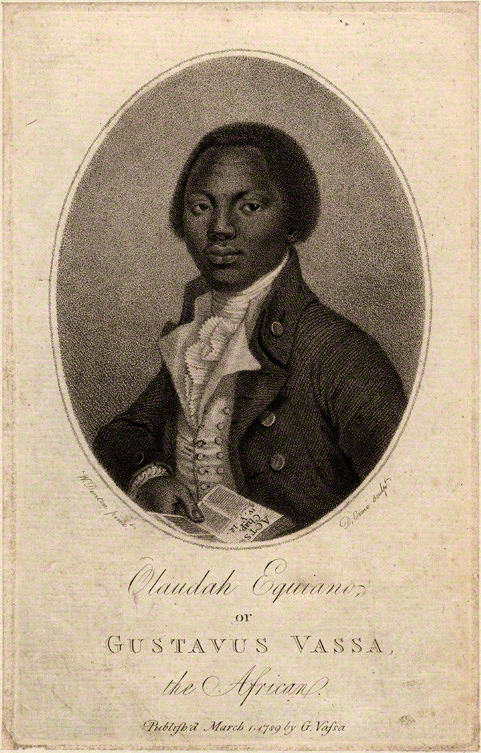
Olaudah Equiano (c. 1745 – March 31, 1797) whose father was an Ibo chief, was born in Southern Nigeria. At the age of 11 years, he was captured by African slave traders and sold into bondage in the New World. He was given the name Gustavus Vassa and was forced to serve several masters. While a slave, he traveled between four continents.
He mastered reading, writing, and arithmetic, and purchased his freedom. He presented one of the first petitions to the British Parliament calling for the abolition of slavery.
He became the first person of African ancestry to hold a post in the British Government when he was appointed to the post of Commissary for Stores to the Expedition for Freed Slaves. This abolitionist-supported venture would create the West African nation of Sierra Leone. He soon began to witness fraud and corruption among those responsible for providing supplies for the expedition. His unwillingness to accommodate this malfeasance led to his dismissal.
He continued to work with leading British abolitionists including William Wilberforce and Thomas Clarkson who urged Parliament to abolish the Slave Trade. He interjected his history into the struggle when in 1789 he wrote and published his autobiography titled The Interesting Narrative of the Life of Olaudah Equiano or Gustavus Vassa the African, Written by Himself. His narrative soon became the first “best seller” written by a Black Briton. He embarked on a lecture tour of England, Scotland, Wales, and Ireland to promote his book. He advanced several religious and economic arguments for the abolition of slavery.
He married an Englishwoman, Susanna Cullen (1792) and the couple had two daughters. He died ten years before the slave trade was abolished and 36 years before Parliament outlawed slavery throughout the British Empire. #africanhistory365 #africanexcellence
2 notes
·
View notes
Text
February 9, 2024
About the boarding and delay, I was not sure if the plane was boarding late and/or being delayed because of time zone. The difference was one hour. But I know the waiting was taking forever. I was very inpatient because my layover was long. But I was happy to get on the plate and sat with no one.

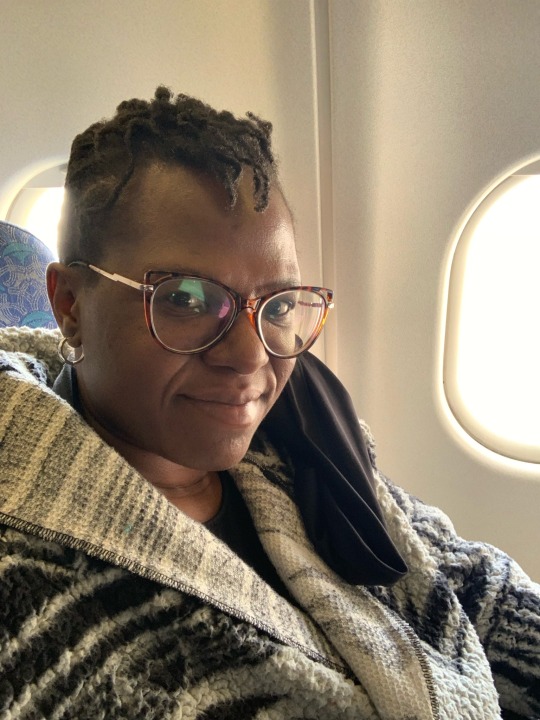
This time, the leg room was more spacious however there was no screen in front of me. That means I would have to watch Netflix on my iPad. And the battery went down to like 30 percent. I lost track on how many episodes I had watched since I traveled to Africa.
I knew I needed a break from watching on screen, so I decided to read a book- a graphic novel about ADHD and other neurodivergent disorders. As much I tried to read, I lost motivation to keep reading because it’s manga- reading from right to left and it became confusing to read. My eyes were tired.
There were two seats on each side and four seats in the middle. Mine was two seats by the window. Even though I am a small person but still it was very difficult for me to lay down and sleep. How uncomfortable. I managed to sleep for an hour or so. I felt better afterward. I knew I needed some sleep because I would be seeing my two sisters, brother in law and five nieces. Hoping I will be able to have some decent sleeps during my stay in Nigeria. I often have hard time to sleep longer and end up being sleep deprived.

My lunch/dinner meal was all right. Just one main entree, side salad, small dessert and bread with spreads (butter or cheese). Earlier, I was very hungry, I was handed out a slice of bread and it was not any good. I threw it away and ate snacks (apple


Or is that a slice of pound cake? Have no absolutely idea what that is.
Cinnamon rice cakes and apple oatmeal crumble) that I brought with me. My stomach acted funny lately but I was able to drink a lot of water to give it a good cleansing and relief.
Let’s learn a bit more about Nigeria before my arrival in Nigeria where I was born and raised until age 5.
Did you know…?
Source:
https://www.kids-world-travel-guide.com/nigeria-facts.html
As of 2023, there are over 220 million people living in Nigeria and 3.8 million people living in Abuja, the capital city of Nigeria. Lagos was the original capital city of Nigeria.
Nigeria’s motto is unity and faith, peace and progress. 53 % Muslims and 44 % Christians
Nigerians are known for being the most happiest people in the world.
Official Language: English
About 65 percent Nigerians age 15 and over can read and write.
Nigeria is the largest country in the Western Africa, the most popular country in Africa and the seventh most populous country in the world. Go Eagle Go!
Flag colors: Green and White.
Nigeria is about twice the size of California or slightly bigger in size than Venezuela. You can’t miss Nigeria on map.
Nigeria is not only an oil-rich country, but also mainly exports petroleum, petroleum products, smaller amount of cacao, rubber products, cotton and palm oil.
Nigeria’s nuts may be the only one peanuts that I love eating and can’t stop eating them!
That’s all for fun and interesting facts about Nigeria.
What I have to prepare myself before landing in Lagos is that the weather will be very unbearable. Very hot in high 90-100 degrees with humidity. Hoping that will help me lose some weights ha!
Good thing I bring my sun hat and deodorant to maintain good hygiene. I definitely would have to drink a lot of water otherwise I would be fatigue. I also have to take malaria pills and sleep under the mosquito nets. I wouldn’t be surprised if I have a lot of bug bites due to my sweet blood.
Foods here are what I look forward to the most. I am a foodie and like to eat. I have to be careful with foods because I can end up become sick due to bacterial infection from raw/uncooked food. Foods are often made fresh, from scratch and are plant-based and/or naturally processed (no/less chemical additive or artificials).

About one hour left to land down… finally after nearly 24 hours of traveling from DC to Lagos. Hoping customs wouldn’t take a lot of my time to be allowed entering Nigeria. To enter Nigeria, you must have either visa or valid Nigeria passport.
I was not able to renew my Nigeria passport in time before my departure for Nigeria. So , I applied for a visa instead. The cost for visa and passport application and process is about the same. Visa is usually good for single or multiple visit up to 6 months. But I am granted for a five year visa because I was born in Nigeria. I hope I will take my family back to Nigeria again before my visa expires. My daughters and Harish had visited Nigeria before but not my sons. My daughters don’t remember their visit in Nigeria and would love to visit there again. Gotta save up $$$. Roughly, $8,000-$10,000 flight tickets for a family of six.
Wow I can’t believe I will be in Nigeria less than an hour. What a surreal feeling. I will be very overwhelmed and in awe for sure.
Just landed in Lagos!!!! Finally after 24 hours of waiting and traveling!
Talk later. Oxox
3 notes
·
View notes
Text
Books I read in March 2023
When I Spoke in Tongues by Jessica Wilbanks. This is a memoir about the author's deconstruction from her Pentecostal childhood faith. It also includes details of her recovery process from an eating disorder and her journey to become a writer. I was really interested in her travel to Nigeria in order to explore Yoruba influence on Pentecostal worship. This was interesting to me because one of my grad school classes involved studying Yoruba religion in Cuba, which also has a large emerging neo-Pentecostal demographic. Although some of my views and experiences with Pentecostalism were very different from Wilbanks's, I appreciated the chance to think carefully about how to approach my experiences through writing and academia intentionally and fruitfully.
Biblical Womanhood by Beth Allison Barr is nonfiction arguing that biblical womanhood as understood by American evangelicals today is not a straightforward reading of the Bible but developed over a long and complicated history, driven by men's desire for power over women. Some of the history was new for me but as a New Testament student I liked her exegesis.
Leftover in China by Roseann Lake is nonfiction about women in China who remain unmarried over age 30-35. There's a lot of detail here about Chinese marriage norms historically and in the present, the impact of the one-child policy meaning that there were fewer girls in China and the girls who were born suddenly had unprecedented attention and access to educational and financial opportunity. I was really interested in the interviews with various women--it offered a personal glimpse into the challenges, privileges, and priorities of these unmarried women.
The Last Queen by Chitra Banerjee Divakaruni is historical fiction about the life of Maharani Jindan. This book has romance, politics, trauma of war, and ends with a very moving parent-child tragedy of assimilation and colonization. (Spoilers: you can blame a whole lot of problems on the British.)
The Gilded Page by Mary Wellesley. Nonfiction about handwritten manuscripts, mostly centered on medieval England. Wellesley is interested in what the manuscripts reveal about the people who wrote them by hand: marginalia, errata, other traces of everyday life. This book wove in neatly with Biblical Womanhood's discussion of Margery of Kempe. I was also really interested in all the detail it gave about the ascetic lives of anchoresses.
Heart Berries by Terese Marie Mailhot. This memoir follows the author through her struggle as an Indigenous woman to leave an abusive relationship, learn how to live with bipolar disorder, and parent her two sons. Mailhot makes a conscious effort not to write an auto-hagiography, showing her worst moments in full detail that earns the audience's sympathies even more effectively. I love reading authors' memoirs because at some point they turn into books about writing books. It was really cool to see Mailhot's success after how hard she worked to earn it.
The Last Cuentista by Donna Barba Higuera. Dystopian middle grade scifi. When Earth becomes unliveable, Petra Peña, along with her parents and younger brother, are supposed to be part of a privileged few cryogenically frozen to be woken up 300 years in the future on a new colony planet. When things go wrong Petra stays conscious through her stasis and wakes in a world where no one else remembers stories of Earth. This book was really intense for middle grade fiction! It's a very thoughtful look at grief, love, stories as a means of continuing culture, environmentalism, critique of censorship, and at its heart an argument that conflict comes not from differences between people but from unwillingness to embrace those differences. I appreciated how this book approached its protagonist's disability in a eugenicist dystopia. I'd recommend this book for fans of Tamsyn Muir's Locked Tomb series (particularly if you liked the John chapters in NtN).
The Preacher's Wife by Kate Bowler. This book was already on my list but then Beth Allison Barr talked about Kate Bowler in Biblical Womanhood, which made me even more interested. Bowler looks at celibrity women within evangelicalism, arguing that even the most conservative church spaces offer these spotlit women subtle but significant power, and even the most egalitarian-seeming liberal church spaces still embrace social norms that uphold patriarchal power over women. Fun fact: this book also cites one of my religion professors from undergrad!
How Far the Light Reaches by Sabrina Impler. This book is a collection of memoir essays in which various marine animals are used to illustrate the author's life. The Chinese sturgeon illuminates immigrant familiy history, an octopus watching her eggs pairs with the author's relationship with their mother in regards to disordered eating, and life in high temp, and high pressure volcanic vents are paired with the persistence of a queer community in Seattle. From a craft perspective I'm so impressed by the structure of this work, and it was a real pleasure to read.
Bitter Orange Tree by Jokha Alharthi. Realistic fiction in which an immigrant university student remembers and traces the life of her Omani pseudo-grandmother, who dies just as the narrator is leaving for Britain. There's a lot of love and grief and memory and love again in this book, and the writing is just beautiful.
Bible and Sword by Barbara W. Tuchman explores the historical relationship between Britain and Palestine, particularly the history of Zionism in Britain. (Spoilers: you can blame a whole lot of problems on the British.)
Please Look After Mom by Kyung-Sook Shin. Realistic fiction about the family of a woman who goes missing after she gets separated from her husband at a subway station in Seul. The book switches between the woman's children and husband as narrators, as they search for her and remember her. This book made me think a lot about my own aging parents as I read how easily the children overlook their mother's health issues and failing memory.
The Adventures of Amina al-Sirafi by Shannon Chakraborty. Historical fantasy about a notorious pirate coming out of retirement to rescue the daughter of her old crewmate, in part motivated by love for her own daughter. This book is a bit sweary and has PG-13 level sexual content. We've got ruffians and scallywags, sea monsters, rigorous hospitality, legendary treasures, magic and scholars of magic, and some really thoughtful depictions of religious characters whose faiths inform their difficult decisions. Amina wrestles with her nostalgia for her pirate days in light of her post-retirement efforts to be a devout Muslim. I love how Chakraborty writes interactions between characters of different religions.
Nonfiction:8
Fiction:5
Total nonfiction for 2023 so far:18
Total fiction for 2023 so far:10
Total books read for 2023 so far:28
I'd love to chat about any of these books and I'm always happy to provide content warnings on request! What are y'all reading lately? Anything you really love or really hate? Any recommendations?
9 notes
·
View notes
Text
DEPRESSION AFTER PRESIDENTIAL ELECTION.
It has been a while that I travel to my village as I don't like going to the village for my own personal reason.
The motivation that Peter obi was going to win the election made me to travel back to the village to exercise my franchise despite that I have never voted before.
After the election,obi was not declared the winner as everyone believed that the deprivation of OBI into the presidential vila is a stolen mandate; I was not much bothered because it has been the Nigeria system.
The depression began when a writer approached me and told me that I am one of the chapters of his book i.e a work he is yet to publish.
I was amazed for some reasons which made me to be depressed as it induced rhetorics to my thought.
" what could he be writing about me ?"
"Did he really know much about me?"
" I am not too religious neither am I too decent to attract any form of recognition though I am not arrogant neither do I portray any form of immoral lifestyle but I am neutral in both"
" what if he asks people about me in form of enquiry, what will they tell him? "
Till now, I've not seen nor read the chapter(s) but this has teach me an interesting lesson... that people are watching me from afar . ... That I need to regulate my way of living as the life I am portraying is been mirrored by many despite distance.
As it stands,I am desperately waiting for the publication so that I will see the perspective of some about me.
8 notes
·
View notes
Text
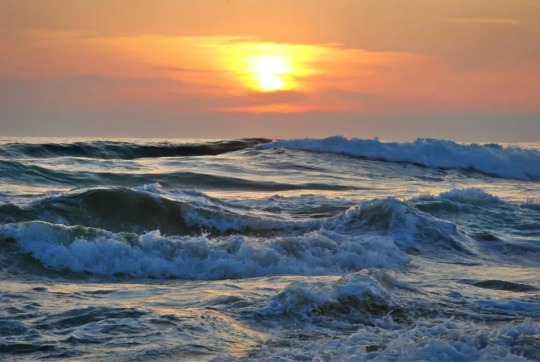
Today in Christian History
Today is Saturday, August 5th. It is the 217th day of the year in the Gregorian calendar; 148 days remain until the end of the year.
1590: Meletius Pegas becomes the Orthodox patriarch of Alexandria. He will endeavor to reunite the Greek and Coptic churches.
1604: John Eliot is baptized in England. His non-conformist views will eventually prompt him to move to America, where he will found fourteen congregations of Indian Christians, translate the Bible into Algonquin, and help prepare the Bay Psalm Book—the first book printed in America. Captured by Indians, he will learn their language while in captivity.
1720: Death in England of Anne Finch, Countess of Winchilsea, a notable poet and hymnwriter, loyal to King James II. Among her best-known religious poems is “The Atheist and the Acorn,” which depicts an atheist as a fool for trying to outguess God’s arrangements. She had also written a praise hymn beginning, “To the Almighty on his radiant throne / Let endless hallelujahs rise.”
1751: Rev. John Cuthbertson, America’s first Scottish Covenanter pastor, arrives in America. His name appears frequently as a genealogical authority because he will keep a log of births and marriages. In it, he records over five thousand family names as well as notes of six hundred marriages and almost two thousand baptisms he performs in the course of seventy thousand miles of ministerial travels.
1833: Allen B. Freeman, a young man recently graduated from a Baptist seminary, arrives to serve as a missionary in Northern Illinois, but will die of cold and exhaustion in December the following year after his horse collapses under him, forcing him to walk many miles back to Chicago.
1835: Death of Thomas McCrie, Scottish minister and church historian. He and three other divines had left the General Association Synod and formed the Constitutional Association Presbytery. He also wrote biographies of John Knox and Andrew Melville.
1844: The first assembly of Queen’s College, British Guiana, meets. The school has been established by Anglican bishop William Piercy Austin, a missionary to the South American colony.
1876: Scottish missionary Mary Slessor boards the SS Ethiopia to sail to Calabar (Nigeria). She shares the ship with a cargo of liquor.
1955: Death of Jesse Irvin Overholtzer, founder and first director of Child Evangelism Fellowship.
4 notes
·
View notes
Note
Jasmine Tea and Iced Cafe Mocha?
Jasmine Tea : If you could go anywhere in the world, where would it be and why?
Ooof there are so many places i would want to visit, it's impossible to choose one. I'd love to go to Dubrovnik in Croatia for example. Not because of Game of Thrones, but because of it's pretty architecture and super interesting history.
I would also love to go to Japan's North because I like the landscape. I would love to go to Sicily to taste all the regional food. I would love to travel the US and Canada to visit all my friends there. I would love to go to Patagonia because it is a long held dream of mine. Same with several of the Indonesian Islands, Thailand and Iceland. Ghana, Nigeria and Gambia also interest me, because I've seen different tv programmes about these countries and they are beautiful and have such beautiful nature and people and traditional food and clothing and I am being totally honest the main reasons for me to travel are to eat good food and buy pretty things directly from the people who make them, mostly crafted things. And to meet different people and learn about their cultures and histories from them instead of from wikipedia/a White European perspective.
Iced Cafe Mocha : Favorite thing to do on rainy days?
Aaaah rainy days my beloved! Depending on the temperature, it's sip some tea play video games and draw or sip some ice tea and chill with a book/draw in the hanging chair on the terrace time :)
Thanks for asking my friend! 💕
6 notes
·
View notes
Text
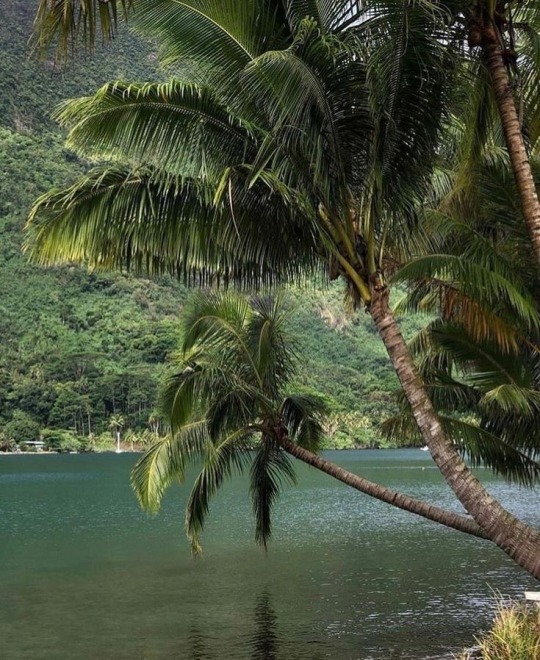


march language goals (+ february review) 💚
hello everyone & happy new month! ♡
i did get some slightly more active revision done this month, which i'm happy about. my plans of travelling/moving to nigeria before the summer have also changed till after summer, which i was quite bummed about. i wasn't really surprised tho but i will see it as a blessing in disguise, nonetheless. i did plan on spending this summer in europe anyway, so maybe it will make more sense in the end.
my current languages:
french (A2)
dutch (A1)
edo
lets review my february language goals ♡:
maintain a 30 days duolingo & busuu streak (83 days duolingo / 51 days busuu, so completed)
watch 5 easyfrench & easydutch YouTube videos (i watched 3 easydutch videos and i think 1 easyfrench videos, but i'm honestly not sure about that one. i have been watching other youtube videos in both languages, specifically football and equestrian related but i will talk about it more in my resource list post)
watch the remaining episodes of s1 represent (netflix) (completed)
watch the remaining episodes of s1 misfit: die serie (netflix) (completed)
start watching another french series (netflix) e.g. ‘the circle: france’ (i did start watching peppa pig (netflix) with english subtitles, so completed)
start watching another dutch series (netflix) e.g. ‘die goldene stunde’ (i started to watch peppa pig (disney+) also in dutch but with no subtitles, so also completed)
work through the lessons 1 - 5 in ‘The Complete French Self-Study Guide’ (eBook) (not completed, but i got to lesson 3, so i will finish it off in march)
start to watch ‘Learn French in 5 Days # Day 1’ up until ‘Le verb s’appeler (32:27)’ (YouTube) (not completed)
create a language learning plan for edo (completed)
watch the 9 edo videos save in the watch later playlist (youtube) and take notes (i have added a lot more videos now but i have defo watched at least 9 videos, so completed as well)
watch 1 edo movie (not completed, YET but i have added it to my watch later list on youtube)
listen to all episodes of ‘Let’s Edo’lize it: An Edo Language Podcast’ (spotify) (completed, and i'm also thinking about joining her course this summer but lets see)
listen to all episodes of ‘The Great Benin Empire’ (spotify) (i only listened to 1 out of 5 episodes, so not completed YET)
start the side blog (yh no, not completed. i'm thinking of starting the side blog around april/may time, not sure yet)
and i know i have been saying i will post my resources list but i don't seem to get around it. i honestly haven't been on social media much for the last few weeks, which i will talk about in another post. but i will post my resource list at some point.
here are my march language goals ♡:
maintain a 30 days duolingo & busuu streak
completed the march challenge on duolingo
watch 5 easyfrench & easydutch youtube videos
watch at least 3 episodes of french peppa pig (netflix)
watch at least 3 episodes of dutch peppa pig (disney+)
complete lessons 1 - 5 in ‘The Complete French Self-Study Guide’ with notes taking (eBook)
start to watch ‘Learn French in 5 Days # Day 1’ up until ‘Le verb s’appeler (32:27)’ (youtube)
write down all dutch vocabularies up to the numbers on digital dialects (website)
work through ‘Niederländisch Wort für Wort’ to and incl. chapter ‘Dieses & Jenes’
watch the all alphabet & numbers related videos saved in the watch later playlist (youtube) in edo and take notes
watch at least 1 edo movie
listen to all episodes of ‘The Great Benin Empire’ (spotify)
go through the alphabet & numbers in 'Ebe Edo' (book) and take notes
that's it for now,
thanks for reading & best wishes,
mars the prinzess xx
⋆𐙚₊˚⊹♡
*none of the pictures i used are my own, unless stated otherwise. i got them from pinterest ♡
#language learning#langblr#languages#langblog#learning dutch#learning french#student#studyspo#study motivation#studyblr#study with me#study aesthetic#pink academia#pink blog#personal blog#personal development#self care#education#self love#habit tracking#dream girl#hobbies#becoming that girl#text from mars ♡
5 notes
·
View notes
Text
ISLAM 101: SPIRITUALITY IN ISLAM: PART 117
The meaning of Tasawwuf
Last Part 12
Among the Sufis who aided Islam with the sword as well as the pen, to quote Reliance of the Traveller were: such men as the Naqshbandi sheikh Shamil al-Daghestani, who fought a prolonged war against the Russians in the Caucasus in the nineteenth century; Sayyid Muhammad ‘Abdullah al-Somali, a sheikh of the Salihiyya order who led Muslims against the British and Italians in Somalia from 1899 to 1920; the Qadiri sheikh ‘Uthman ibn Fodi, who led jihad in Northern Nigeria from 1804 to 1808 to establish Islamic rule; the Qadiri sheikh ‘Abd al-Qadir al-Jaza’iri, who led the Algerians against the French from 1832 to 1847; the Darqawi faqir al-Hajj Muhammad al-Ahrash, who fought the French in Egypt in 1799; the Tijani sheikh al-Hajj ‘Umar Tal, who led Islamic Jihad in Guinea, Senegal, and Mali from 1852 to 1864; and the Qadiri sheikh Ma’ al-‘Aynayn al-Qalqami, who helped marshal Muslim resistance to the French in northern Mauritania and southern Morocco from 1905 to 1909.
Among the Sufis whose missionary work Islamized entire regions are such men as the founder of the Sanusiyya order, Muhammad ‘Ali Sanusi, whose efforts and jihad from 1807 to 1859 consolidated Islam as the religion of peoples from the Libyan Desert to sub-Saharan Africa; [and] the Shadhili sheikh Muhammad Ma‘ruf and Qadiri sheikh Uways al-Barawi, whose efforts spread Islam westward and inland from the East African Coast … . (Reliance of the Traveller,863).
It is plain from the examples of such men what kind of Muslims have been Sufis; namely, all kinds, right across the board—and that Tasawwuf did not prevent them from serving Islam in any way they could.
To summarize everything I have said tonight: In looking first at Tasawwuf and Shari‘a, we found that many Qur'anic verses and sahih hadiths oblige the Muslim to eliminate haram inner states as arrogance, envy, and fear of anyone besides Allah; and on the other hand, to acquire such obligatory inner states as mercy, love of one’s fellow Muslims, presence of mind in prayer, and love of the Prophet (Allah bless him and give him peace). We found that these inward states could not be dealt with in books of fiqh, whose purpose is to specify the outward, quantifiable aspects of the Shari‘a. The knowledge of these states is nevertheless of the utmost importance to every Muslim, and this is why it was studied under the ‘ulama of Ihsan, the teachers of Tasawwuf, in all periods of Islamic history until the beginning of the present century.
We then turned to the level of Iman, and found that though the ‘Aqida of Muslims is that Allah alone has any effect in this world, keeping this in mind in everyday life is not a given of human consciousness, but rather a function of a Muslim’s yaqin, his certainty. And we found that Tasawwuf, as an ancillary discipline to ‘Aqida, emphasizes the systematic increase of this certainty through both mudhakara, ‘teaching tenets of faith’ and dhikr, ‘the remembrance of Allah,’ in accordance with the words of the Prophet (Allah bless him and give him peace) about Ihsan that “it is to worship Allah as though you see Him.”
Lastly, we found that accusations against Tasawwuf made by scholars such as Ibn al-Jawzi, and Ibn Taymiya were not directed against Tasawwuf in principle, but to specific groups and individuals in the times of these authors, the proof for which is the other books by the same authors that showed their understanding of Tasawwuf as a Shari‘a science.
To return to the starting point of my talk this evening, with the disappearance of traditional Islamic scholars from the Umma, two very different pictures of Tasawwuf emerge today. If we read books written after the dismantling of the traditional fabric of Islam by colonial powers in the last century, we find the big hoax: Islam without spirituality and Shari‘a without Tasawwuf. But if we read the classical works of Islamic scholarship, we learn that Tasawwuf has been a Shari‘a science like tafsir, hadith, or any other, throughout the history of Islam. The Prophet (Allah bless him and give him peace) said,
“Truly, Allah does not look at your outward forms and wealth, but rather at your hearts and your works” (Sahih Muslim, 4.1389: hadith 2564).
And this is the brightest hope that Islam can offer a modern world darkened by materialism and nihilism: Islam as it truly is; the hope of eternal salvation through a religion of brotherhood and social and economic justice outwardly, and the direct experience of divine love and illumination inwardly.
#allah#god#islam#muslim#quran#revert#convert#conevrt islam#revert islam'reeverthelp#revert help#revert help team#help#islamhelp#coneverthelp#prayer#salah#muslimah#reminder#pray#dua#hijab#]religion#mohammad#new muslim#new revert#new convert#how to convert to islam#convert to islam#welcome to islam
7 notes
·
View notes
Text
Half-year wrap-up and 1 Year Anniversary!
I posted the first review for my YA World Challenge reading project on June 24 last year, so I just realized it's my 1 year anniversary!
So far I have finished 40 countries/regions! Including 2 trilogies and 1 duology that makes 45 books, at a rate of almost 4 per month. I'm pretty happy with that progress! I finished 20 books in 2023 so far.
I'm also happy that I'm still enjoying this project. Sticking to genres I like has helped, and I'm amazed by the diversity of new YA releases coming out lately, which has made it easy to pick up new books (thanks, Netgalley!!)
Challenge progress:
40 of 208 countries/regions (newly added in bold)
🇦🇫 Afghanistan - One Half from the East, Nadia Hashimi
🇦🇷 Argentina - Furia, Yamile Saied Méndez
🇦🇿 Azerbaijan - The Orphan Sky, Ella Leya
🇧🇸 Bahamas - Facing the Sun, Janice Lynn Mathers
🇧🇴 Bolivia - Woven in Moonlight + Written in Starlight, Isabel Ibañez
🇧🇼 Botswana - Entwined, Cheryl S. Ntumy
🇨🇦 Canada - This House is Not a Home, Katłıà
🇨🇫 Central African Republic - Beasts of Prey, Ayana Gray*
🇨🇳 China - Daughter of the Moon Goddess, Sue Lynn Tan
🇨🇿 Czech Republic - Torch, Lyn Miller-Lachmann
🇪🇪 Estonia - The Man Who Spoke Snakish, Andrus Kivirähk
🇫🇯 Fiji - The Wild Ones, Nafiza Azad
🇫🇷 France - Kiffe Kiffe Tomorrow, Faïza Guène
🇬🇷 Greece - Tina’s Web, Alki Zei
🇬🇱 Greenland - Last Night in Nuuk, Niviaq Korneliussen
🇬🇩 Grenada - Sugar Money, Jane Harris
🇮🇳 India - Lioness of Punjab, Anita Jari Kharbanda
🇮🇶 Iraq - Yazidi!, Aurélien Ducoudray & Mini Ludvin
🇮🇪 Ireland - All Our Hidden Gifts, Caroline O'Donoghue
🇯🇵 Japan - Lonely Castle in the Mirror, Mizuki Tsujimura
🇱🇹 Lithuania - Between Shades of Gray, Ruta Sepatys
🇲🇾 Malaysia - The Weight of Our Sky, Hanna Alkaf
🇲🇽 Mexico - Secret of the Moon Conch - David Bowles; Guadalupe García McCall
🇲🇦 Morocco - Thorn, Intisar Khanani*
🇳🇬 Nigeria - An Ordinary Wonder, Buki Papillon
🇲🇰 North Macedonia - A Spare Life, Lidija Dimkovska
🇵🇸 Palestine - Travellers Along the Way, Aminah Mae Safi
🇵🇱 Poland - When the Angels Left the Old Country, Sacha Lamb
🇵🇹 Portugal - Mariana, Katherine Vaz
🇵🇷 Puerto Rico - The Wicked Bargain, Gabe Cole Novoa
🇷🇴 Romania - And I Darken (trilogy), Kiersten White
🇷🇺 Russia - Night Watch, Sergei Lukyanenko
🇼🇸 Samoa - Telesā: The Covenant Keeper, Lani Wendt Young
🇬🇧 Scotland - The Library of the Dead, T.L. Huchu
🇸🇬 Singapore - Sofia and the Utopia Machine, Judith Huang
🇸🇪 Sweden - The Circle (Engelsfors trilogy), Sara Elfgren & Mats Strandberg
🇹🇹 Trinidad & Tobago - When the Vibe is Right, Sarah Dass
🇦🇪 United Arab Emirates - Alif the Unseen, G. Willow Wilson*
🇺🇸 United States - Elatsoe, Darcie Little Badger
🇿🇼 Zimbabwe - All That It Ever Meant, Blessing Musariri
*inspired fantasy world
Currently reading:
🇱🇰 Sri Lanka - I Am Kavi, Thushanthi Ponweera
🇨🇺 Cuba - A Tall Dark Trouble, Vanessa Montalban
#updates#ya world challenge#reading challenge#half year update#booklr#bookblr#june wrap up#2023 reads#books#tbr goals#ya books#fantasy books#diverse books#currently reading#books and reading#reading goals#read the world#authors of color#reading list
2 notes
·
View notes